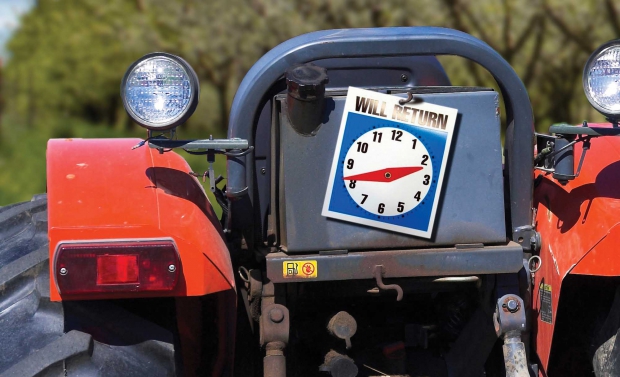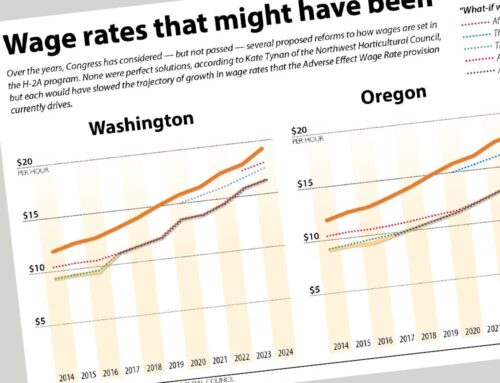
( Aurora E. Lee/Good Fruit Grower illustration)
California farmers are now required to provide paid rest breaks for their workers. So, what’s the best way to pay them?
Previously, when employees were paid by piece-rate, rather than an hourly wage, the employees paid for any breaks they took, as they earned nothing while not working.
This is why hourly paid workers had no trouble stretching their break time while some piece-rate workers used to skip theirs, points out Gregorio
Billikopf, labor management farm advisor with the University of California, Davis.
According to California Farm Bureau labor law specialist Carl Borden, employers in California must pay workers, in addition to their piece-rate earnings, at least minimum wage for all nonproductive work time.
Nonproductive time includes heat illness prevention cooldown breaks, time spent donning safety clothing or equipment, travel time between fields, company-controlled waiting time, and company meetings for safety training or job training.
Billikopf believes it’s in the employer’s interest to pay for rest breaks. Besides earning employee good will, the cost will be more than made up for by increased productivity and less workplace illness and injury, he said. The question is how to pay them.
One option Billikopf suggests is to keep track of nonproductive time, including breaks, and pay at least the minimum wage. For example, if employees earn two ten-minute breaks a day, they would be paid for an additional a third of an hour.
“To take full advantage of the breaks, make sure that employees take them and are not just paid for them,” Billikopf urges.
Another option for piece-rate employees is to pay them for breaks based on what they would have earned if they’d kept on working. This means that highly productive employees earn more for their rest periods than slow ones (although all must earn at least the equivalent of the minimum wage).
Research Billikopf has conducted shows that many workers are wary of showing employers what they can really do under piece rate for fear that the rate will be reduced if they earn too much.
The approach of paying a piece-rate equivalent for rest periods helps employers drive the message that increased productivity is a win for both employees and management. However, it would not be sustainable for other types of nonproductive time or if rest periods were longer.
“I feel that paying for a short break through either option one or two may well help farm employers attract and retain good workers and motivate employers,” says Billikopf, who prefers option two for short breaks.
“The advantages are rewarding particularly fast and effective employees and overcoming historical worker perceptions about piece-rate pay,” he said. “For heat-illness prevention cooldown breaks, for longer breaks, and for other types of nonproductive time compensation, I prefer option one—adding a separate wage to the piece-rate pay earnings.” •






Leave A Comment